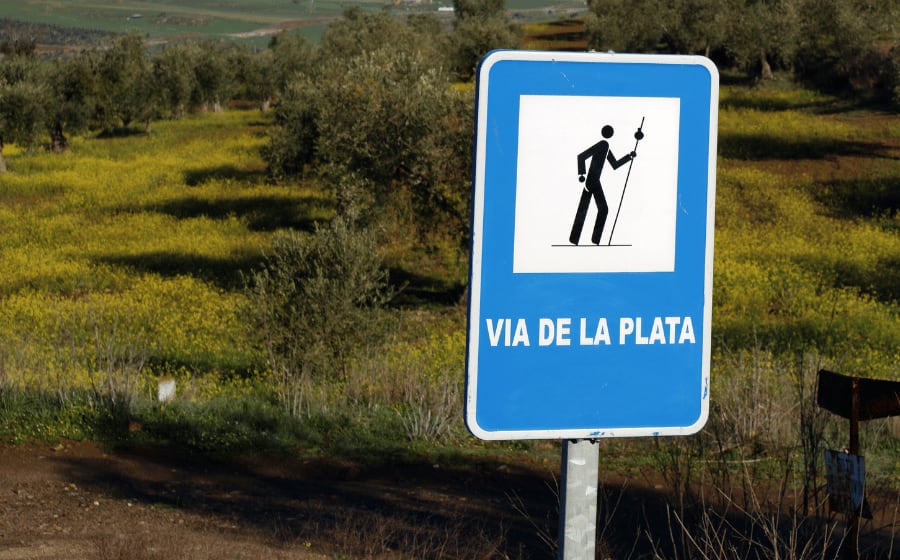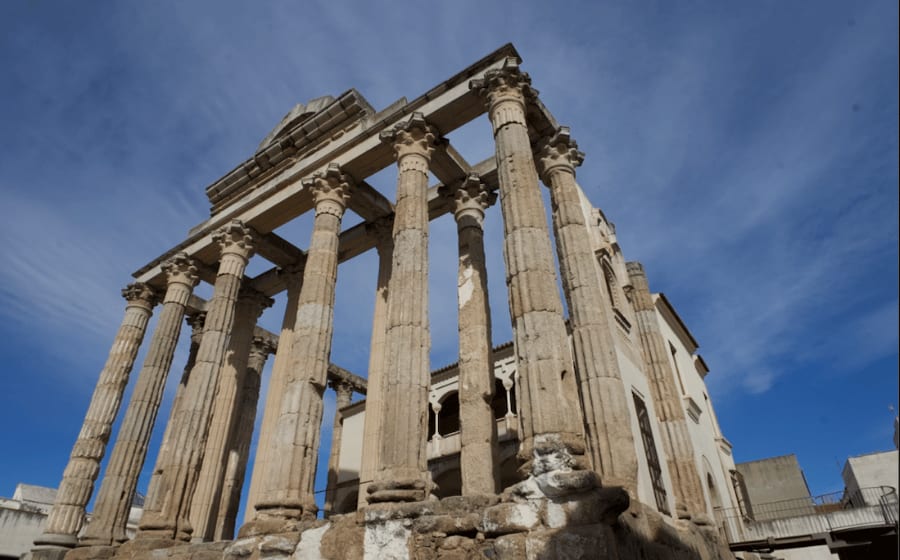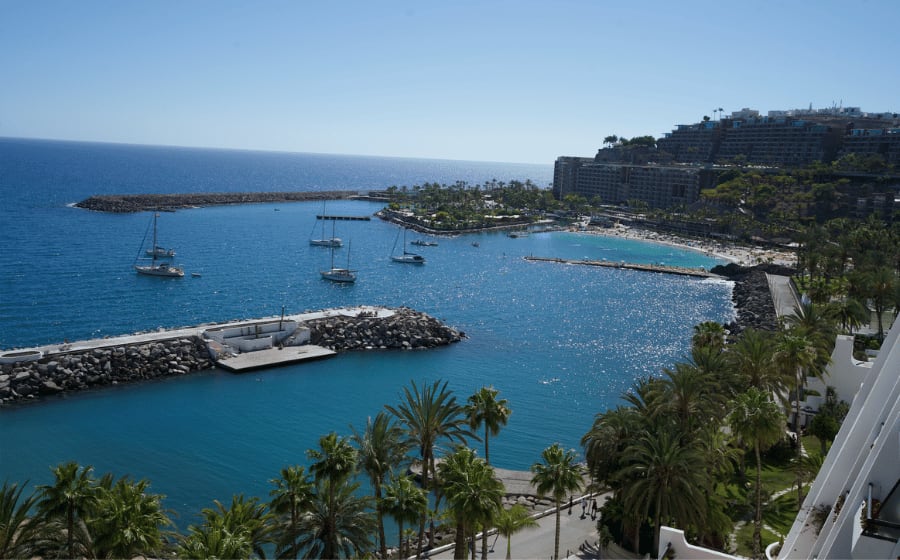Is Cordoba Islamic? History of the Great Spanish Caliphate
January 25, 2023
Win a FREE Trip to Spain!
Exciting Announcement! For the first time, we're thrilled to offer exclusive trips to the heart of Spain - an experience like no other. This isn't your typical tourist journey; it's a unique opportunity to immerse yourself in authentic Spanish culture, alongside real locals and our passionate team.
But there's more! Simply by requesting information about this amazing trip, you'll be entered into a special draw to win a Fully Paid Trip to Spain for Two. And that's not all - everyone who inquires will receive an exclusive bonus gift, valued at $500, available only now.
Ready to Discover the Real Spain?Click Here ↑ to Request Information & Enter the Draw!
Is there any city in Spain considered Islamic? Does the Al-Andalus endure until today?
Today, most Spanish population is Catholic, and Catholicism is intertwined with Spanish culture but is not the only one.
Before the Christian Kings took the territory back, Spain was known as Al-Andalus, and Cordoba was the most important city. It was the center of a Caliphate.
After reading this article, you will know the history an the main things to do in Cordoba, Spain.
Table of Contents ▼ ▶
Is Cordoba Islamic?
Cordoba was the capital of Islamic Spain during the Ummyad Dystany from 929 to 1031. Modern-day Cordoba has a solid Islamic influence, but the truth is that although Islam is present in architecture and culture, Catalonia has the highest amount of Muslim citizens, followed by Andalusia.
Currently, Cordoba is one of Spain’s top ten most visited places.
Pre-Islamic Cordoba
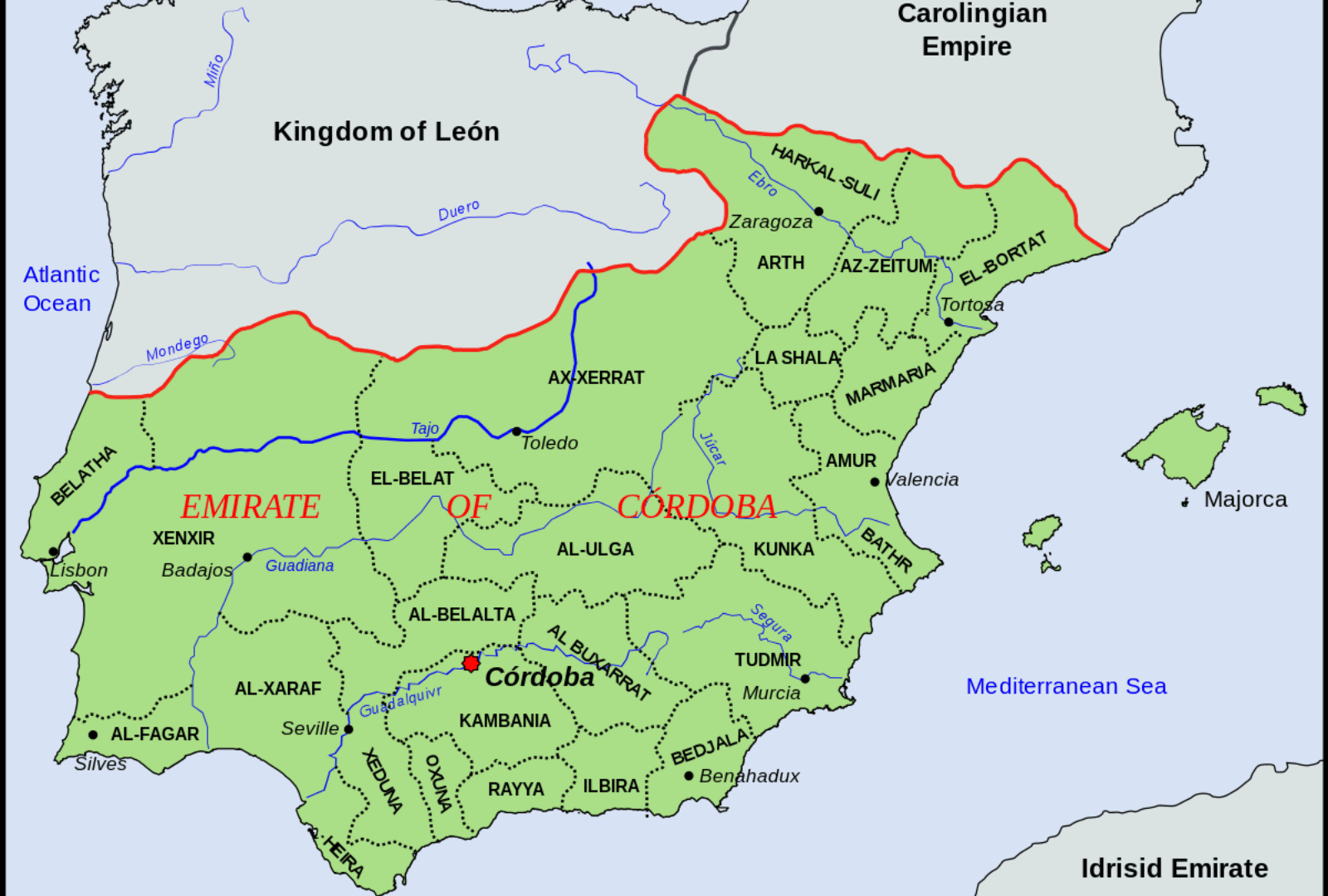
Before the Ummayad Dynasty took over the Iberian Peninsula, the Visigoths occupied the area.
By the 8th century, the Ummyad Dynasty conquered almost all of Northern Africa’s coast; in 711, the Muslim troops launched a full-scale conquest of the Iberian Peninsula.
Tariq Ibn Ziyad was the commander of the Ummyad troops. He led the army through the Strait of Gibraltar to Southern Hispania, where he encountered the Visigothic army led by king Roderic.
Ibn Ziyad defeated and killed king Roderic in battle, and this unexpected event allowed the Muslim troops to move toward the north and establish a peninsula for the Ummayad Dynasty. Cordoba is chosen as the dynasty’s capital on the Iberian Peninsula.
The Ummayad Caliphate remained strong until 750 when the Abbasids defeated the Umayyad Caliph in northern Africa.
By 756, the remaining Ummayad leader, Abd Al-Rahman I, refused to acknowledge the Abbasids. So, instead, he made his territory in the peninsula independent from the power in northern Africa, creating the Emirate of Cordoba.
Keep in mind this definition! ‘Emirate’ means a region or territory ruled by an emir, and an emir is a local chief or military commander.
Cordoba Caliphate
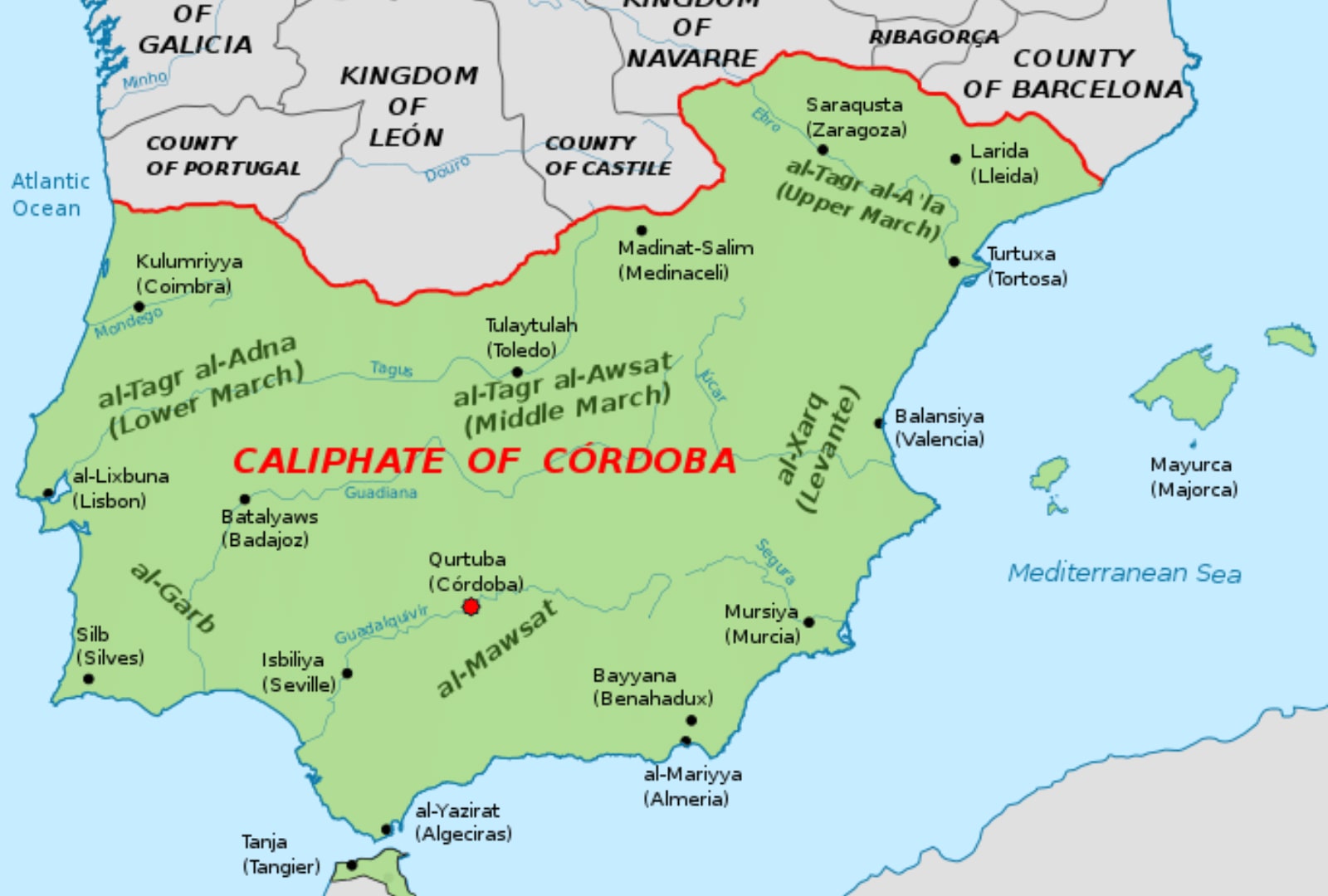
The Emirate of Cordoba remained stable until 912 when the new emir Abd al-Rahman XII took power. So, to consolidate power, Raham created alliances within the entire peninsula and with some tribes of North Africa. In addition, since the occupation of the Ummyada, Cordoba has become a world-leading center of education and learning. However, his diplomatic strategy didn’t give long-lasting results, and something else needed to be done.
Rahman XII was getting external pressure from the Abbasids Caliphate in Baghdad and the Fatimids Caliphate in Tunisia. In return, he declared himself a caliph and established the Caliphate of Cordoba on the Iberian Peninsula.
Was this a significant move? It was crucial.
Unlike an emir, a caliph is a title given to the leader of the entire Muslim community. Rahman XII declared a competition for the title with the Abbasids and the Fatimids.
So, the Caliphate of Cordoba was a bold move to remain in opposition to other rulers. Once he declared himself Caliph, Rahman increased diplomacy between the Iberian Peninsula and the Berber Tribe.
From Rahman III to his successor, Al-Hakam, the Iberian peninsula prospered. Cordoba became Europe’s most advanced city with leading philosophy, medicine, and astronomy professionals.
This is also the period of the ‘Three Cultures,’ when Muslims, Christians, and Jews lived and worked together without falling apart.
After Rahman, the territory was ruled by Al-Hakam, named caliph in 961. Under the new ruler, the Caliphate remained thriving by improving its relationships with European and African neighbors.
Fall of the Caliphate of Cordoba
The end of the Caliphate of Cordoba began when Al-Hakam chose his ten-year-old son, Hisham III, to succeed him.
After Al-Hakam died, the Caliphate was left in the hands of Almanzar (advisor to the king) and Subh (the mother of Hisham). Even though both did their best to protect the Caliphate, people weren’t happy with the idea of having a ten-year-old as ruler.
Local revolts and foreign threats weakened the powerful empire and led to its downfall. The Caliphate of Cordoba crumbled into several independent taifas or states, and all that was left was Cordoba’s taifa, which eventually fell into the hands of King Ferdinand III in the 13th century.
Things to Do in Cordoba
Landmarks of Muslim Influence

As you just read, Cordoba’s history is intertwined with Muslim culture. The most famous landmark in the city is the Mosque-Cathedral, but there are four other things to do in the former great Spanish Caliphate.
1. Medina al-Zahra
Medina means ‘city of the prophet.’
Remember Abd al-Rahman III? He was the one leader that upgraded himself to caliph. Let us also remember that what Rahman did was a bold political moved that positioned him as the leader of all Muslims, and a leader must have a home that shows it. So, in 929, he commanded the construction of a city palace worthy of his political status.
Today, Medina al-Zahra is located 8 km from modern-day Cordoba; it is a breathtaking archeological place that no one can skip when visiting the city.
The al-Zahra only lasted 80 years, but it was an impressive fortress that consolidated Rahman’s power for the time it was standing.
In 2019 it was declared a World Heritage Site by UNESCO. Additionally, the tourism office of Andalusia recreated what the place might have looked like; they explain that a stone wall with towers surrounded it, it had three mosques, it was filled with patios, and the place for bureaucrats and servants to stay alongside the king.

Transport
You can get to Medina al-Zahra by car or public transport. If you are interested in the latter, I will leave you the link to the tickets here!
2. Cordoba’s Synagogue
Remember we talked about the three cultures? Jews, Christians, and Muslims live together (almost) peacefully. Well, a beautiful landmark in the city is the 14th-century synagogue.
You can’t afford to miss the synagogue because it is UNIQUE. I am not exaggerating here; it is one of the only three synagogues in Spain.
I know the subtitle of this section says ‘Muslim landmarks,’ but follow my train of thought. After the Christians took the territory, those who were allowed to stay were called ‘mudéjar,’ a term widely used to reference the architectural style of that period.
So, the masonry during the 14th century was traditionally Muslim and kept that way but under Christian rule.
So, even though this synagogue belongs to the Jewish community in Cordoba, its architecture still reflects the times of the Caliphate. UNESCO declared it a World Heritage Site in 1994.
3. Estrella de los Deseos
‘Estrella de los Deseos,’ or the Wishing Star, is located in the Jewish Quarter, very close to the Mosque-Cathedral, and if you find it, all your dreams will come true.
Maybe not all of them, but that is what the legend says. The star is a sea star fossil right in the middle of a wall; how did it get there? No one knows. All we know is that if you find it, you should rub your fingers on it and ask for a wish.
HINT! Its two minutes away from the Great Mosque of Cordoba.
4. San Bartolomé’s Chapel
Again, I know a chapel is not a Muslim landmark; but the architectural style of this place is (you guessed it) mudéjar! And it is beautiful.
The chapel was built in the early 15th century during the Jewish expulsion and is located in the Jewish Quarter.
Here is the link to the virtual tour of the chapel sponsored by the Faculty of Philosophy and Literature.
5. The Great Mosque of Cordoba/ Cathedral of Our Lady the Assumption
The history of this landmark goes beyond the Ummayad Dynasty. It has been proven that under the mosque lies the remains of a Roman temple dedicated to the god Janus.
After the Roman Empire fell, the Visigoths occupied the territory, and around the 6th century, they constructed a church. Then, the Visigoths were defeated by the Ummayad, and Abd al-Rahman I focused on recreating the grandeur of Damascus (the previous home to the Ummayad), so he commissioned the construction of a great mosque.
The construction of the Great Mosque extended 200 hundred years because different rulers added different things.
Rahman III added a minaret, a tower adjacent to the mosque meant to call believers to pray. And Hakam II added the beautifully decorated mihrab, indicating the direction of Mecca (holy city) and where Muslims should pray.
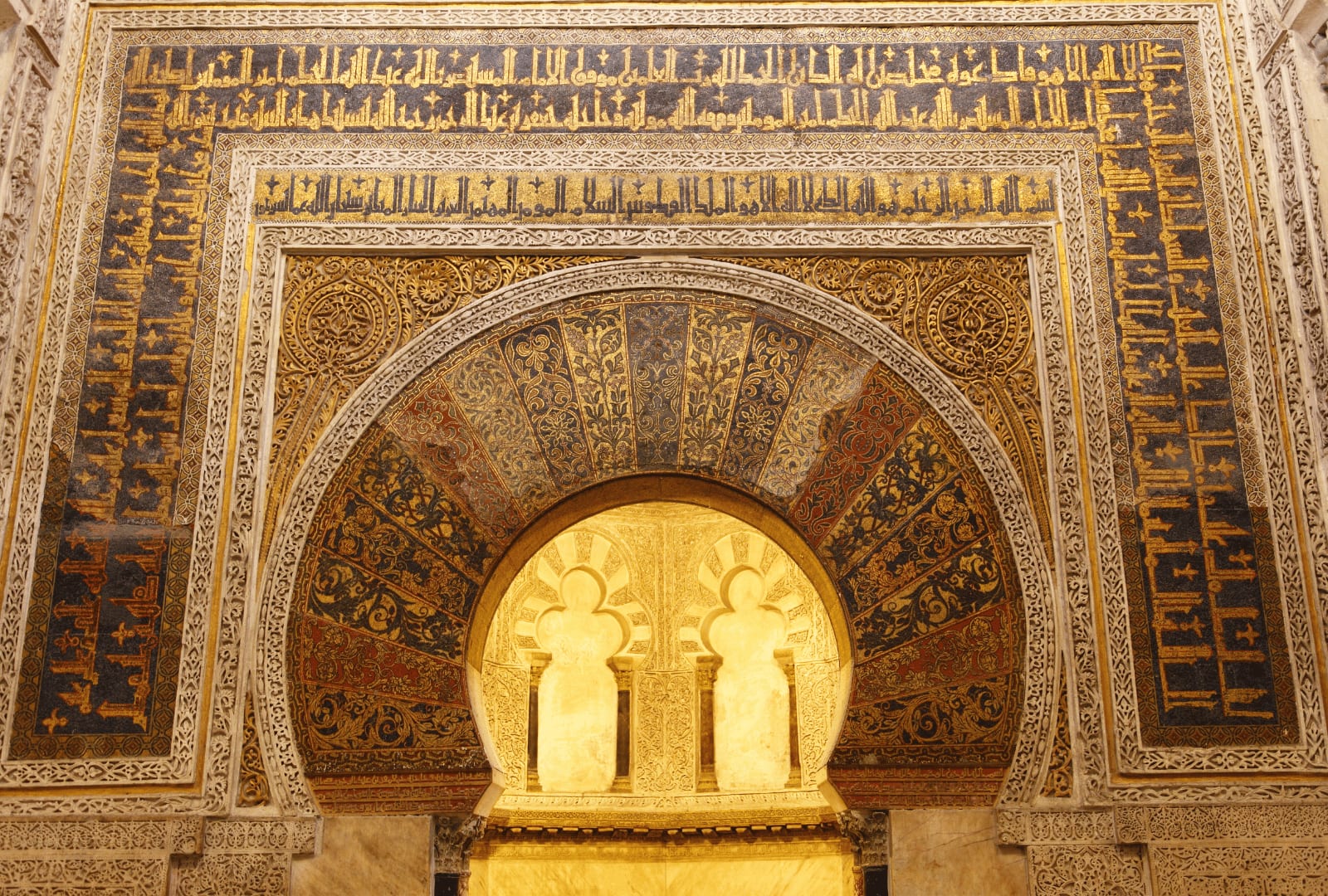

If you are visiting Cordoba, check the tickets to the Great Mosque with time!
So, let us do a recap of Cordoba’s evolution in history. After the Romans Empire fell came the Visigoths, and it was during the time of king Roderic that the Ummyads took over.
The Ummayad Dynasty was strong back in North Africa until de Abbasids revolted. Rahman III refused to let go of his territory on the Iberian Peninsula and founded the Caliphate of Cordoba.
Nowadays, Cordoba is not Islamic like other countries in the Middle East, but it certainly has a beautiful Muslim influence.



